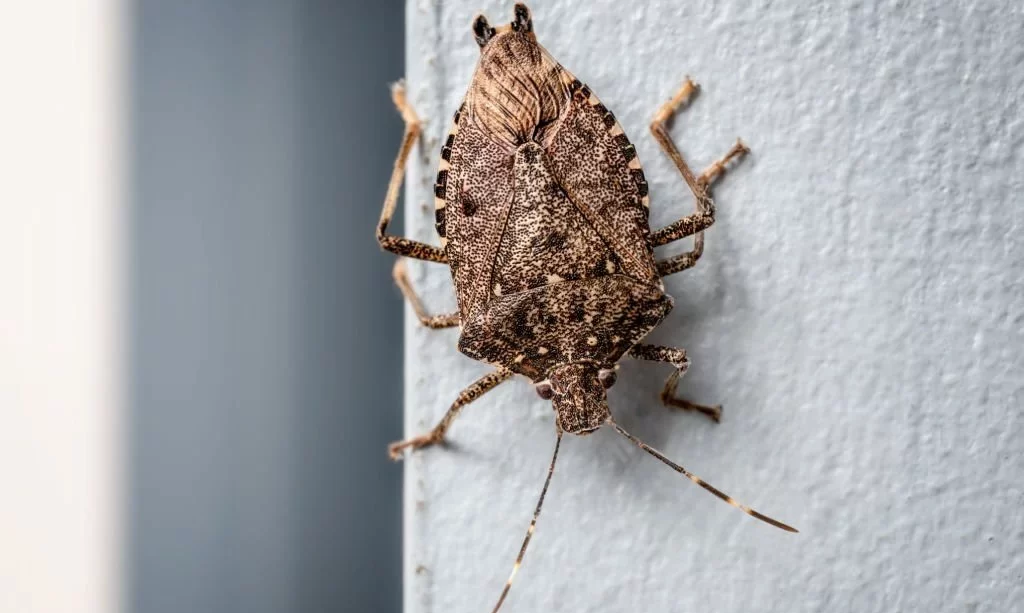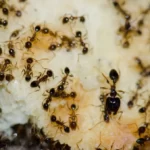Stink bugs, scientifically known as Pentatomidae, are a diverse family of insects known for their distinct shield-like shape and, as their name implies, their rather pungent odor when threatened. These insects are commonly found in gardens, agricultural fields, and sometimes, even in our homes. While stink bugs may evoke curiosity and sometimes concern due to their presence, questions about stink bug bites often arise. In this article, we’ll explore the anatomy and feeding habits of stink bugs, shedding light on their intriguing characteristics. Additionally, we will delve into their primary defense mechanisms, which play a crucial role in their interactions with the world around them. By understanding these aspects, we can better grasp the likelihood and consequences of stink bug bites.
Stink Bug Anatomy and Feeding Habits
Stink bugs possess a unique and unmistakable appearance. They typically feature a triangular or shield-shaped body, which varies in color depending on the species, ranging from shades of brown to green. To understand the likelihood of stink bug bites, it’s essential to comprehend their feeding habits and the structure of their mouthparts. Stink bugs are herbivorous insects that primarily feed on plant juices. They are equipped with specialized mouthparts called stylets, which are needle-like structures that allow them to pierce plant tissues and extract the sap. This herbivorous diet is a crucial aspect of their lifestyle, as it provides them with the nutrients necessary for survival and reproduction. It’s important to note that stink bugs are not natural predators of humans; their primary interaction with us is typically accidental.
Defensive Mechanisms of Stink Bugs
One of the most fascinating aspects of stink bugs is their remarkable defensive mechanisms. When stink bugs feel threatened or cornered, they have a unique way of deterring potential predators. Unlike some insects that resort to biting as a defense, stink bugs utilize a different strategy. They possess specialized glands in their abdomen that can release a noxious, foul-smelling chemical compound. This odor is the source of their common name, “stink bug”. The pungent smell is designed to deter predators and buy the stink bug a chance to escape. While this defensive mechanism is highly effective against creatures that might try to make a meal out of them, it is rarely directed at humans. In most cases, stink bugs perceive humans as too large to be threats, and they are more likely to release their odor when handled or crushed. Consequently, actual stink bug bites on humans are uncommon and typically occur in self-defense rather than as a predatory behavior.
Stink Bug Bites vs. Defensive Spraying
It’s crucial to distinguish between stink bug bites and the more common defensive spraying behavior. Stink bug bites are rare and, when they do occur, are often mild and typically feel like a minor pinprick. In contrast, the well-known aspect of stink bugs is their ability to release a pungent odor when threatened. Defensive spraying is their primary line of defense against potential predators. When disturbed or handled roughly, stink bugs can emit this foul-smelling substance as a deterrent. The odor can be quite unpleasant and lingers, which is why many people are more familiar with this defensive mechanism than actual stink bug bites.
Potential Allergic Reactions and Irritation
While stink bug bites are infrequent and usually benign, some individuals may experience mild skin irritation or itching at the site of the bite. However, severe allergic reactions to stink bug bites are exceedingly rare. The discomfort caused by a stink bug bite is typically short-lived and self-resolves without medical intervention. Any unusual or severe symptoms, such as extensive swelling, rash, or signs of infection at the site of the bite, should be taken seriously. In such cases, seeking medical attention is advisable to rule out potential complications.
Prevention and Dealing with Stink Bugs
Given the rarity of stink bug bites, the best approach is prevention and humane removal. To prevent stink bugs from entering your home, ensure windows and doors are properly sealed, especially during their peak activity in the fall. If you encounter a stink bug indoors, consider using a glass and paper to gently capture and relocate it outdoors. This approach minimizes the risk of both bites and defensive spraying. Maintaining good hygiene and promptly cleaning any areas where stink bugs are present can also reduce potential discomfort.
When to Seek Medical Attention
Although severe reactions to stink bug bites are unlikely, it’s important to recognize when to seek medical attention. If you experience unusual or severe symptoms after a stink bug bite, such as intense swelling, persistent pain, or signs of infection like pus or increasing redness, consult a healthcare professional promptly. Individuals with known allergies to stink bug bites should carry any prescribed medications or epinephrine auto-injectors and use them as directed if necessary.
Conclusion
In conclusion, the likelihood of a stink bug bite is minimal, and these insects are not naturally inclined to bite humans. Their primary defense mechanism is the release of a foul odor as a deterrent. While stink bug bites may cause mild irritation in some cases, severe reactions are exceptionally rare. Prevention, humane removal, and good hygiene practices are key to minimizing any potential discomfort associated with stink bugs. If you ever experience unusual or severe symptoms after a stink bug bite, it is advisable to seek medical attention to ensure your well-being. Ultimately, understanding stink bugs’ behavior and defensive mechanisms allows us to coexist with these fascinating insects more harmoniously.



